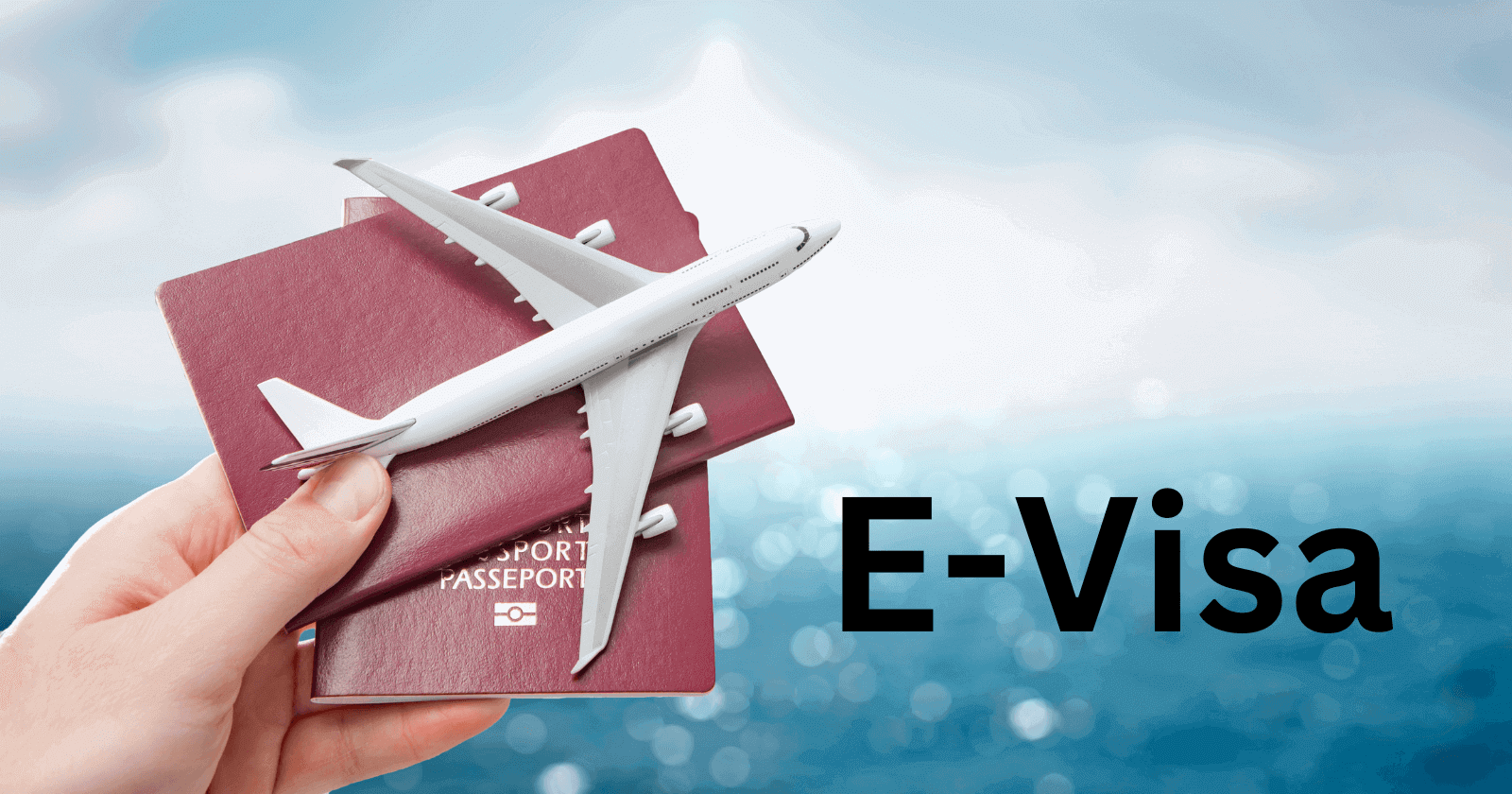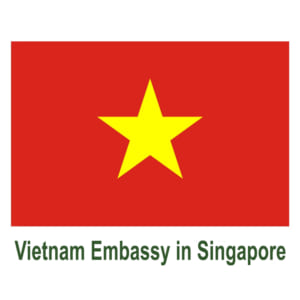
Vietnam’s E-Visa Process for 2025 Explained – A Traveler’s Comprehensive Guide
Vietnam’s E-Visa Process for 2025 Explained is expected to be a well-refined and streamlined process, making it easier for travelers to explore this captivating Southeast Asian nation. As the Vietnamese government continues to evolve its visa policies, the E-Visa system is anticipated to become even more user-friendly, with enhanced features and expanded eligibility.
Introduction: Vietnam’s E-Visa Evolution Leading to 2025

The Vietnamese government’s efforts to simplify the visa application process have led to significant changes in recent years, with the E-Visa system being a major breakthrough. As we approach 2025, it’s essential to understand the evolution of Vietnam’s E-Visa process and what changes travelers can expect.
The Rise of E-Visa and its Benefits
The introduction of the E-Visa has revolutionized travel to Vietnam, offering a convenient and cost-effective alternative to traditional visa methods. With the E-Visa, eligible nationalities can apply online, receive approval electronically, and enter Vietnam without the hassle of traditional visa procedures.
The E-Visa system has not only simplified the application process but also reduced the processing time, making it an attractive option for travelers. The benefits of the E-Visa are numerous, including reduced paperwork, faster processing times, and increased convenience.
As the E-Visa system continues to evolve, it’s likely that we’ll see further improvements, such as enhanced security measures and expanded eligibility. Travelers can expect a more streamlined and efficient application process, making it easier to plan their trip to Vietnam.
The Impact of E-Visa on Vietnam’s Tourism Industry
The E-Visa system has had a significant impact on Vietnam’s tourism industry, with a notable increase in tourist arrivals. The ease and convenience of the E-Visa application process have made Vietnam a more attractive destination for travelers worldwide.
The growth in tourism has not only boosted the economy but also contributed to the country’s cultural exchange and understanding. As the E-Visa system continues to evolve, it’s likely that we’ll see further growth in tourism, with more travelers taking advantage of the simplified application process.
The Vietnamese government has taken steps to promote tourism, including simplifying visa requirements and improving infrastructure. The E-Visa system is a key component of this strategy, and its continued evolution is expected to drive further growth in the tourism sector.
Future Developments and Expectations
As we look ahead to 2025, it’s likely that the E-Visa system will continue to evolve, with further improvements and enhancements. Travelers can expect a more streamlined and efficient application process, with expanded eligibility and enhanced security measures.
The Vietnamese government is expected to continue to refine the E-Visa system, making it more user-friendly and accessible to a wider range of nationalities. As the tourism industry continues to grow, the demand for a more efficient and streamlined visa application process will drive further innovation and improvement.
Understanding the Current Vietnam E-Visa System (2024)

To understand what to expect from the 2025 Vietnam E-Visa process, it’s essential to examine the current system in place. The current E-Visa system has been in operation for several years, and while it’s considered relatively straightforward, there are areas where improvements can be made.
The current E-Visa system allows eligible nationalities to apply online, with a processing time of around 3-5 working days. The application process involves submitting required documents, including a passport bio page and a digital photograph, and paying the E-Visa fee.
Eligibility and Required Documents
The current E-Visa system has specific eligibility criteria, with certain nationalities being eligible to apply. The required documents include a valid passport with at least six months’ validity, a digital copy of the passport bio page, and a recent passport-sized digital photograph.
Travelers must also provide information about their planned entry and exit dates, as well as their intended purpose of visit. The E-Visa fee is non-refundable, even if the application is rejected.
Processing Times and Fees
The current processing time for an E-Visa is around 3-5 working days, although this can vary depending on the workload of the immigration department. The E-Visa fee is relatively affordable, making it an attractive option for travelers.
Challenges and Limitations
While the current E-Visa system has simplified the application process, there are still challenges and limitations. One of the main issues is the limited eligibility, with certain nationalities not being able to apply.
Additionally, the processing time can be unpredictable, and delays can occur. Travelers must also ensure that they provide accurate and complete information to avoid rejection.
Key Changes Anticipated in the 2025 Vietnam E-Visa Process

As we look ahead to 2025, it’s likely that the Vietnam E-Visa process will undergo significant changes. The Vietnamese government is expected to continue to refine the E-Visa system, making it more user-friendly and accessible to a wider range of nationalities.
Expanded Eligibility and Simplified Application Process
One of the key changes anticipated in the 2025 Vietnam E-Visa process is expanded eligibility. The Vietnamese government is expected to expand the list of eligible nationalities, making it easier for travelers from more countries to apply.
The application process is also expected to become more streamlined, with a simplified online application form and reduced processing times.
Enhanced Security Measures
The 2025 Vietnam E-Visa process is likely to include enhanced security measures, such as advanced biometric authentication and improved data verification.
These measures will help to improve the integrity of the E-Visa system, reducing the risk of fraud and ensuring that travelers are who they claim to be.
Increased Flexibility and Validity
The 2025 Vietnam E-Visa process may also include increased flexibility and validity. Travelers may be able to apply for E-Visas with longer validity periods, making it easier to plan multiple trips to Vietnam.

Eligibility Criteria for the 2025 Vietnam E-Visa
To be eligible for the 2025 Vietnam E-Visa, travelers must meet specific criteria. The eligibility criteria are expected to remain largely the same as the current system, although there may be some changes.
Nationality and Passport Requirements
Travelers must be from a nationality that is eligible for the E-Visa. The list of eligible nationalities is expected to be expanded in 2025, making it easier for travelers from more countries to apply.
Travelers must also have a valid passport with at least six months’ validity. The passport must be in good condition, with no damage or tampering.
Purpose of Visit and Planned Entry and Exit Dates
Travelers must provide information about their planned entry and exit dates, as well as their intended purpose of visit. The E-Visa is typically intended for tourism, business, or short-term visits.
Required Documents and Information
Travelers must provide required documents, including a digital copy of their passport bio page and a recent passport-sized digital photograph. They must also provide accurate and complete information about their travel plans.
Step-by-Step Guide: Applying for the 2025 Vietnam E-Visa
Applying for the 2025 Vietnam E-Visa is expected to be a relatively straightforward process. Here’s a step-by-step guide to help travelers navigate the application process.
Accessing the Official E-Visa Website
The first step is to access the official E-Visa website. Travelers should be wary of unofficial websites that may charge exorbitant fees or solicit unnecessary information.
Completing the Online Application Form
The online application form will require travelers to provide personal details, passport information, travel plans, and contact information. Travelers must ensure that they provide accurate and complete information to avoid rejection.
Uploading Required Documents
Travelers must upload required documents, including a digital copy of their passport bio page and a recent passport-sized digital photograph. The documents must meet specific size and format requirements.
Paying the E-Visa Fee
The E-Visa fee is non-refundable, even if the application is rejected. Travelers must pay the fee using a valid credit or debit card.
Required Documents and Information for a Successful Application
To ensure a successful application, travelers must provide required documents and information. The required documents include a valid passport, a digital copy of the passport bio page, and a recent passport-sized digital photograph.
Passport and Passport Bio Page
Travelers must have a valid passport with at least six months’ validity. The passport must be in good condition, with no damage or tampering.
The digital copy of the passport bio page must be clear and legible, with all information visible.
Digital Photograph
The digital photograph must be recent and meet specific size and format requirements. The photograph must be passport-sized, with a neutral background and a clear facial expression.
Travel Plans and Contact Information
Travelers must provide accurate and complete information about their travel plans, including their planned entry and exit dates and intended purpose of visit.
They must also provide contact information, including an email address and phone number.
Processing Times and Fees for the 2025 E-Visa: What to Expect
The processing time and fee for the 2025 E-Visa are expected to be relatively similar to the current system. However, there may be some changes, with the Vietnamese government continuing to refine the E-Visa system.
Processing Times
The processing time for the 2025 E-Visa is expected to be around 3-5 working days, although this can vary depending on the workload of the immigration department.
Fees
The E-Visa fee is non-refundable, even if the application is rejected. The fee is expected to remain relatively affordable, making it an attractive option for travelers.
Tips and Best Practices for a Smooth Vietnam E-Visa Application in 2025
To ensure a smooth Vietnam E-Visa application in 2025, travelers should follow some tips and best practices. These include providing accurate and complete information, uploading required documents that meet specific size and format requirements, and paying the E-Visa fee using a valid credit or debit card.
Double-Checking Information
Travelers should double-check their information to ensure accuracy and completeness. This includes checking their passport information, travel plans, and contact information.
Using Official Websites and Channels
Travelers should use official websites and channels to apply for the E-Visa. This includes accessing the official E-Visa website and contacting the Vietnamese embassy or consulate if necessary.
Planning Ahead
Travelers should plan ahead, applying for the E-Visa well in advance of their planned entry date. This will help to ensure that they receive their E-Visa in time, avoiding any delays or complications.
Conclusion
In conclusion, the Vietnam E-Visa process for 2025 is expected to be a well-refined and streamlined process, making it easier for travelers to explore this captivating Southeast Asian nation. With expanded eligibility, simplified application processes, and enhanced security measures, the E-Visa system is set to become even more user-friendly and accessible to a wider range of nationalities. By understanding the eligibility criteria, required documents, and processing times, travelers can ensure a smooth and successful application process. As the Vietnamese government continues to refine the E-Visa system, travelers can look forward to a more efficient and convenient way to plan their trip to Vietnam.


